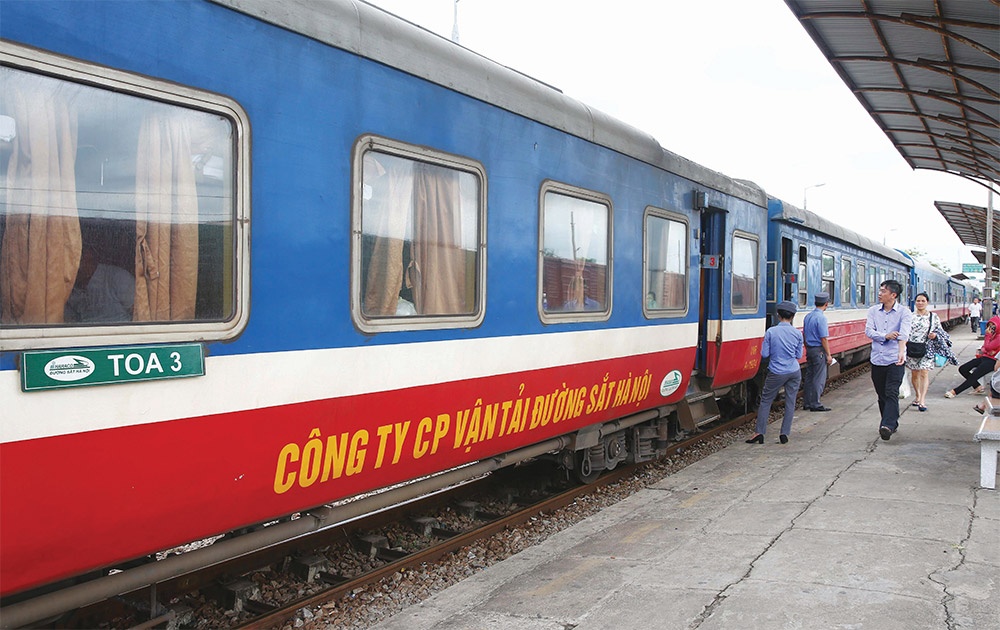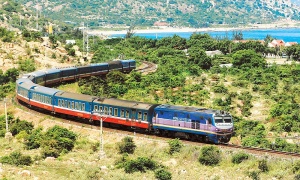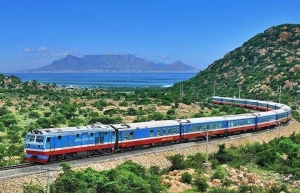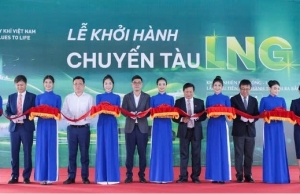Path forward for transit strategy under the spotlight
At a conference on transit-oriented development (TOD) in Hanoi on October 11, experts discussed the potential, prospects, and challenges of initiatives under the new legal framework. They agreed that legal facilitation would bring about more improvements for related projects.
According to the Hanoi Metropolitan Railway Management Board, the TOD model is being studied for urban rail transit hubs across the city. Under the capital’s construction and transportation planning for 2030, with a vision towards 2050, Hanoi is expected to have 10 metro lines spanning 413km and three monorail lines extending 44km.
 |
| Path forward for transit strategy under the spotlight |
Nguyen Cao Minh, general director of the board, described TOD as an urban planning and development approach that concentrates on urban rail transit hubs. These hubs serve as centres for residential, commercial, and office activities, all within walking distance of public transport services.
“The TOD area includes railway stations, depots, and adjacent areas designed for transportation routes and urban railway systems. These areas are integrated with urban renovation and development projects,” Minh said.
He further noted that Article 31 of the Law on Capital City 2024 introduces policies and tools for TOD projects in Hanoi, defining areas, setting out planning regulations, and providing land value capture tools. “Hanoi People’s Committee now has the authority to establish policies and tools related to planning, investment, and land value. Resolutions for these matters are either being prepared or are already in the drafting stage.”
Minh added that a resolution currently being drafted will outline the standards for architecture, technical and social infrastructure, spatial requirements, and land use for TOD areas. These standards aim to create a consistent framework for planning at various levels.
Additionally, the resolution includes procedures for the formulation, approval, and adjustment of TOD planning and related urban railway routes and construction site locations. Importantly, it defines how revenues generated from the increased land value in TOD areas – such as those resulting from the development of the urban railway system – will be captured. These revenues will be allocated entirely to the city’s budget to fund the development of the urban railway system under the model.
Seck Yee Chung from Baker & McKenzie highlighted the clarity provided in the Land Law 2024 regarding land lease and allocation. “Although foreign-invested enterprises still cannot directly receive land use rights from third parties, the law makes exceptions for industrial and high-tech zones with upfront land rental payment,” Chung said.
Lesley Tan, partner at Wong Partnership, pointed to Singapore’s Land Betterment Charge as a transparent system that captures increased land value resulting from public infrastructure improvements.
“Developers in Singapore are incentivised to invest in TOD zones due to the regulatory certainty and long-term profitability,” she said, noting that Hanoi could benefit from adopting similar policies.
Despite positive prospects, experts at the conference identified several obstacles, including lengthy approval processes for TOD planning as well as difficulties with site clearance as land prices near relevant areas rise. Additionally, there is uncertainty about funding sources, as it remains unclear whether the city or central budget will finance these projects.
Nguyen Ngoc Duong, an expert on urban development, pointed out the complexities of some projects, noting that it typically takes at least two years to start such projects.
“The ability to mobilise private capital remains unclear in Article 31. It’s also uncertain whether compensation costs will come from the state budget or private investors,” he said.
Experts proposed several solutions to expedite the process, including hiring international experts for TOD planning and integrating planning for mass rapid transit systems with urban, rural, and land use planning. They also called for government decrees to shorten the approval process and investment disbursement timeframes, aiming to reduce the duration from two years to six or seven months.
To encourage investment in these types of projects, experts recommended government guarantees or credit risk insurance, as well as allowing land planned for development but not yet compensated to be used as collateral for bank loans.
 | Private investment in railway industry yet to shine Vietnam’s railway industry is waiting for legal improvements to increase its attraction. Tran Thien Canh, director of the Vietnam Railway Authority, talked to VIR’s Tung Anh about the prospects for the sector in this country. |
 | Railways sector gears up for National Day surge Vietnam Railways (VNR) has expanded train services and launched promotions to meet increased demand during the National Day celebrations (September 2), ready to accommodate a surge in passenger numbers. |
 | First LNG train shipment on south-north railway route launched PV GAS on September 6 started supplying the first liquefied natural gas train shipment on the north-south railway, expanding the supply map nationwide |
What the stars mean:
★ Poor ★ ★ Promising ★★★ Good ★★★★ Very good ★★★★★ Exceptional
Related Contents
Latest News
More News
- Ho Chi Minh City starts construction of four key infrastructure projects (January 15, 2026 | 17:22)
- PIDG invests with AquaOne to expand Xuan Mai’s treated water supply to Hanoi (January 15, 2026 | 11:16)
- Vietnam ranks 38th in global AI adoption (January 14, 2026 | 16:01)
- European business confidence reaches highest in seven years (January 13, 2026 | 10:17)
- Vietnam’s regional influence draws renewed global attention (January 12, 2026 | 13:59)
- AI and digital twin centres launched in Hanoi (January 09, 2026 | 15:06)
- Vietnam leads ASEAN in EV market growth (January 09, 2026 | 14:39)
- AMC Robotics establishes Vietnam subsidiary to support robotics manufacturing (January 09, 2026 | 09:50)
- Major transport PPP projects open 2026 with strong investor interest (January 08, 2026 | 17:01)
- ONE and MTI launch AI-focused shipping venture (January 08, 2026 | 10:35)

 Tag:
Tag:



















 Mobile Version
Mobile Version